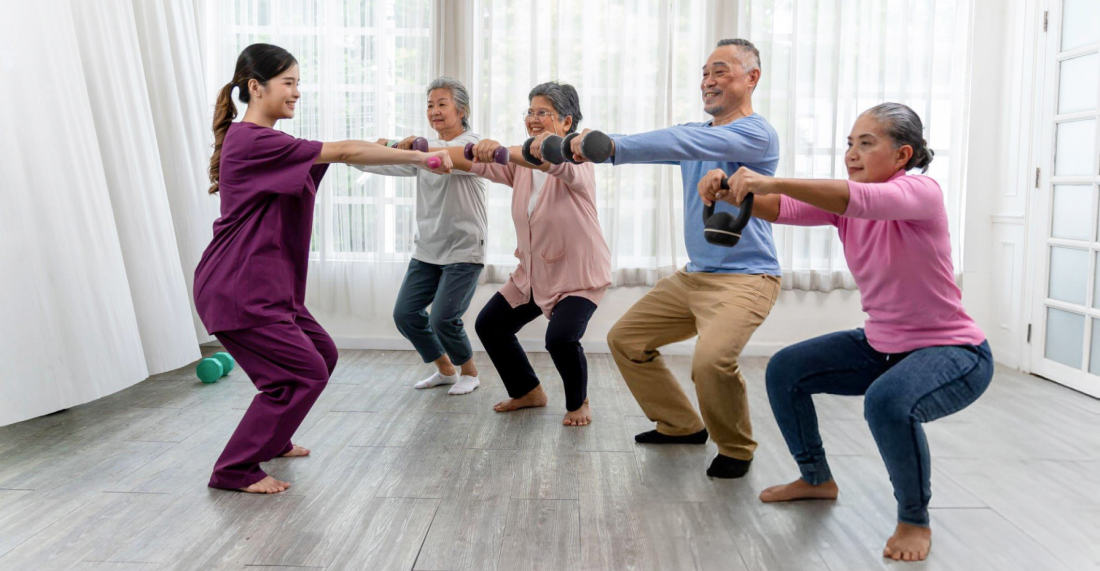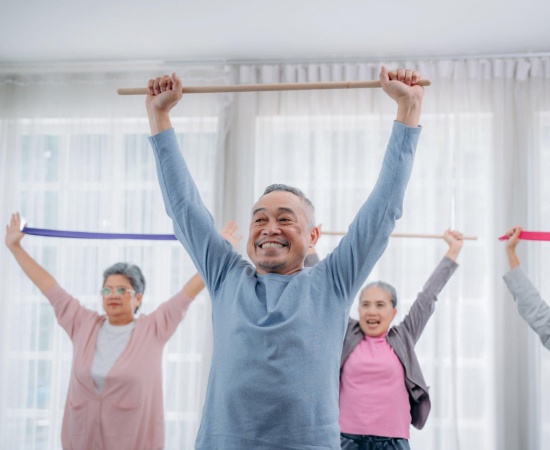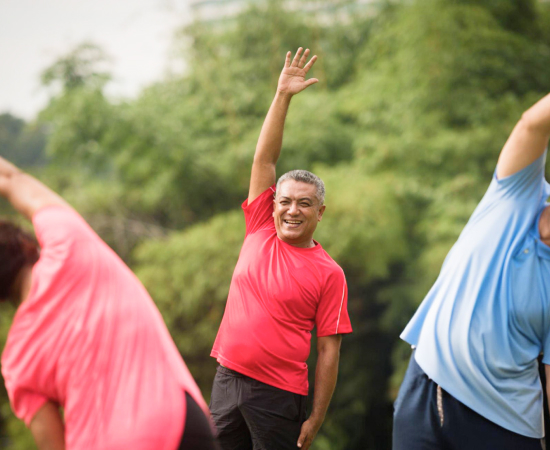

Exercise and nutrition are essential parts of a healthy lifestyle for a person all lifelong, but more so for seniors. More and more senior people are opting for an active lifestyle instead of a sedentary one.
Staying physically active is a cornerstone of healthy ageing, contributing to improved strength, balance, and overall vitality. However, motivation can sometimes wane when exercising alone. This is where group fitness gets useful. It provides not only structured and beneficial workouts but also a supportive and encouraging environment.
This article explores the dual benefits of group fitness for seniors, highlighting how the social dynamics and shared goals can significantly enhance both physical health outcomes and the enjoyment of staying active.

Group exercises involve multiple people participating in the same physical activity, such as sports teams, walking groups, or fitness classes, offering social interaction and increased motivation for staying active. Doing some kind of physical activity every day helps seniors remain healthy, reduce the risk of heart disease and stroke and be mentally active.
However, all older adults should consult a physician before taking up any exercise regime, especially if they are suffering from a medical condition or a chronic illness.
Modern-day understanding of health goes beyond its physical attributes and stretches itself to mental well-being. Group exercises offer a unique milieu of physical activity and social engagement for seniors. Some key benefits of group exercise for seniors are:
Regular participation in physical activities through group exercises works wonders for a senior’s health. It keeps a check on heart conditions and blood flow, retains strength, and boosts flexibility. Regular exercise regimes not only aid in staying at a healthy weight with the right amount of muscle but also fortify the defences against chronic diseases. Group exercise, particularly strength training, can help maintain and increase muscle mass and strength. Exercises such as yoga, and tai chi help maintain balance and flexibility. Regular walking and swimming help the cardiovascular system of the body.
Issues with bone and body aches are common among older adults. Weight-bearing activities such as dancing or walking, can help increase bone density and reduce the risk of osteoporosis and fractures. Sleep deprivation is also very common among seniors. Regular physical activity can help improve and regularise the sleep cycle. By improving strength, balance, and coordination, group exercise can significantly reduce the risk of falls, a major concern for older adults.
Beyond the physical advantages, engaging in group fitness offers significant boosts to seniors’ emotional well-being. It can have immense effect on relieving anxiety and depression symptoms, increase relaxation, and create an overall sense of well-being. The connection between physical activity and mental health is undeniable. Engaging in group fitness classes energizes cognitive processes and promotes mental agility. Plus, exercising together combats feelings of loneliness and fosters a sense of achievement. Also being in a community establishes new interpersonal relationships and a sense of newfound engagement which is a huge mental boost that reflects physically.
Group fitness programs often include exercises that are tailored to the needs and limitations of older adults, making it easier and safer for them to stay active. A wide range of options are available – however, it is essential to select one according to your physical condition.
Low-impact cardio exercises are gentle on the joints while providing an effective workout. Some popular low-impact cardio exercises include walking swimming and cycling. These are ideal for the cardiovascular system. However, seniors should perform these exercises in moderation and individual body strength. Overdoing might result in unnecessary fatigue or accidental injuries.
Building muscle and strong bones through strength training is vital. It makes everyday tasks simpler for older adults and lowers their chances of falling. Some very common strength training exercises include resistance bands, light weights such as dumbbells, and simple bodyweight exercises like squats, lunges, and push-ups. These exercises help in strengthening the core.
These exercises are critical for preventing falls, a common phenomenon among seniors. Some exercises that can be practised daily and especially in groups are standing on one foot which can be performed while holding onto a chair for support, heel-to-toe walking and tai-chi, an ancient practice that combines slow, deliberate movements with deep breathing and is excellent for balance and flexibility.
Flexibility exercises help maintain the body’s range of motion, reducing stiffness and improving overall mobility. It also helps in relaxing and attaining mental peace. Some common group activities include yoga with postures that can be accommodated with the flexibility levels of a senior person. Static stretching gradually elongates muscles and improves flexibility. Dynamic stretching can also be used as a warm-up group exercise.
Perhaps the most important forms of exercise for seniors are those that help maintain mobility, something people don’t think about when they are younger. However, maintaining mobility is the key to enjoying an active and independent lifestyle at one age.
Mobility exercises can help you retain your agility and flexibility, making everyday tasks more manageable and enjoyable. Some of the common exercises that you can do, if you are above 70 are neck stretches, shoulder rolls, ankle circles, hips rotation, and knee and wrist stretches. Incorporating these mobility exercises into your routine along with a few minutes of walking works wonders for body flexibility. The key to maintaining mobility is consistency. Therefore, it is essential to be regular with what you do.
Last, but not the least, it’s most important to consult your doctor before starting any new exercise program, especially if you have any pre-existing physical health condition.

In conclusion, the benefits of group fitness for seniors extend far beyond mere physical improvements. The social connection fostered within these supportive environments creates a powerful synergy, enhancing mental well-being, reducing isolation, and boosting motivation.
By embracing the opportunity to exercise together, seniors can unlock a holistic approach to healthy ageing, enjoying not only stronger bodies but also richer, more connected lives.
Sources:
Spread the love, follow us on our social media channels